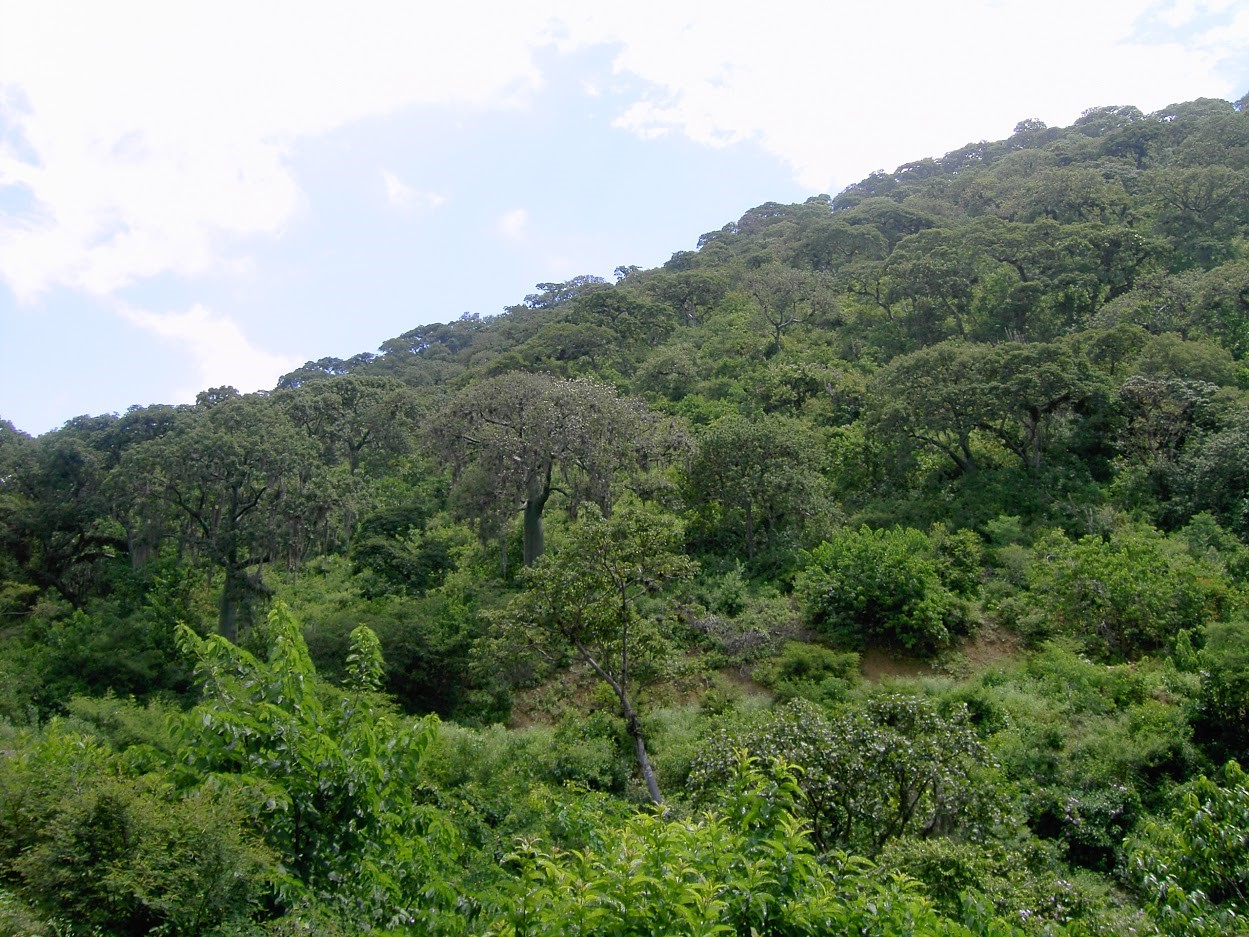Seasonally dry forests are ecosystems that have unique characteristics. The species that inhabit these forests have developed unique features that allow them to survive prolonged droughts and short periods of intense rains. These dry forests are also areas that are under significant pressure from human interventions, making them fragile, highly sensitive ecosystems. These 'dry forests' ecosystems are considered a high priority for conservation worldwide because 97% of dry forests areas are in danger of disappearing.
In Ecuador, in the dry forests in the provinces of Loja and El Oro, representing approximately 50% of what remains of this ecosystem in Ecuador, no more than 25% of the original dry forest remains.
In response to this problem, since 2015 Ecuador’s Ministry of Environment and Water, and since 2018 PROAMAZONIA (also led by Ecuador’s Ministry of Agriculture, and implemented with support from the United Nations Development Program) has promoted ecosystem restoration in the Ecuador-Peru Dry-Forest Transboundary Ecosystem Reserve together with the Dry Forest Association.
Ecosystem restoration in the Dry Forest Biosphere Reserve is a technical, political and social process that responds to the need to return natural characteristics and ecosystem services to the area, and to improve the living conditions for communities. A positive modification of the degraded space is intended to activate the capacity for resilience and rehabilitation of the area. This is achieved through support in the implementation of local public policies that allow sustainability, institutionalization and social inclusion, as a mechanism to recover and maintain environmental services for the benefit of stakeholders.
"With this project we feel that people are being included and able to preserve and produce without affecting the forests, and thus support their families, " says Rita Gallegos, participant of the restoration project in the Paltas canton.
The Dry Forest Biosphere Reserve represents an ecosystem with 501,040 hectares at altitudes ranging from 80 to 3,100 meters above sea level where ecosystem restoration processes have been developed for four years, benefiting directly about 300 people and indirectly some 106,016 inhabitants of eight cantons of southern Ecuador.
Socialization and commitments with property owners are the mechanisms that enable and legitimize interventions for landscape restoration. Technically, the lands are delimited for the implementation of protection actions such as enclosures with mixed fences (60% live and 40% dead posts).
Other actions carried out in conjunction with the land-owners include the production of native plants based on altitude. At lower altitudes (up to 1200 meters above sea level) species such as Handroanthus chrysanthus, Centrolobium ochroxylum and Geoffroea spinosa are being planted whereas at great altitudes (higher than 1200 meters) it is the Cedrela, Arabisco and Lafoensia acuminata. Production in municipal forest nurseries and planting of seedlings is carried out through volunteer campaigns and with local labor. The maintenance of fences and plantations guarantees the effectiveness of restoration and ecosystem services.
Specifically, there are 2,422 hectares under two types of restoration (active and passive) covered by 104 agreements with 48 landowners, 12 public and 36 private (11 are female landowners) where 41 natural springs are identified. The restoration process addresses and respects environmental and social safeguards such as complementarity or compatibility with the objectives of national forest programs. In fact, this project contributes to the national reforestation goals, contributes to the goals established by the Action Plan for the Reduction of Emissions from Deforestation and Degradation of Ecuador's forests; and contributes to climate commitments under Ecuador’s NDC.
Also, in terms of respect to safeguards, the restoration process only uses native plants, respects the knowledge and rights of local communities, as well as the full and effective participation of stakeholders.
For the Dry Forest Association, the involvement of women in these processes is essential, thus the project support staff has a high sensitivity and commitment to work with the gender approach, valuing the capacities and aptitudes of men and women, so that the participation of women is considered in daily work as an empowerment opportunity and not as an additional burden. This is why in training actions and workshops there is a participation of 41% of women.
The joint work shows promising results with as evidence the recovery of ecosystem services, especially that of water regulation, which is constantly being monitored in quality and quantity of water through a sampling of 12 watersheds.
The objective is clear, there can be no conservation without sustainable human development. For this reason, the Dry Forests Association promotes various forms of sustainable production and local governance. It has formed 13 joint ventures.
It should be noted that the participation of women in these activities is 47%, which promotes their generation of income and supports their family. Several of these ventures are supported by PROAmazonía, working on sustainable tourism, handicrafts made of cabuya fiber, cheese, honey, corn flour, bamboo-based handicrafts and furniture, and finally sustainable entrepreneurship.
The joint management model has proven to be an effective mechanism where ecosystem conservation and human development converge and promotes the implementation of actions and measures to halt deforestation and degradation through restoration, seeking technical and financial efficiency and scale.
Restoration actions in Ecuador represent an important partnership effort with the UN-REDD program. Ecuador has benefited from National Program support and technical assistance from the UN-REDD Program, with whom it has been working since 2012. This support has allowed the implementation of the National REDD + Strategy and completion of the requirements to receive REDD + Results-Based Payments and continue with actions in favor of mitigating the effects of climate change.
